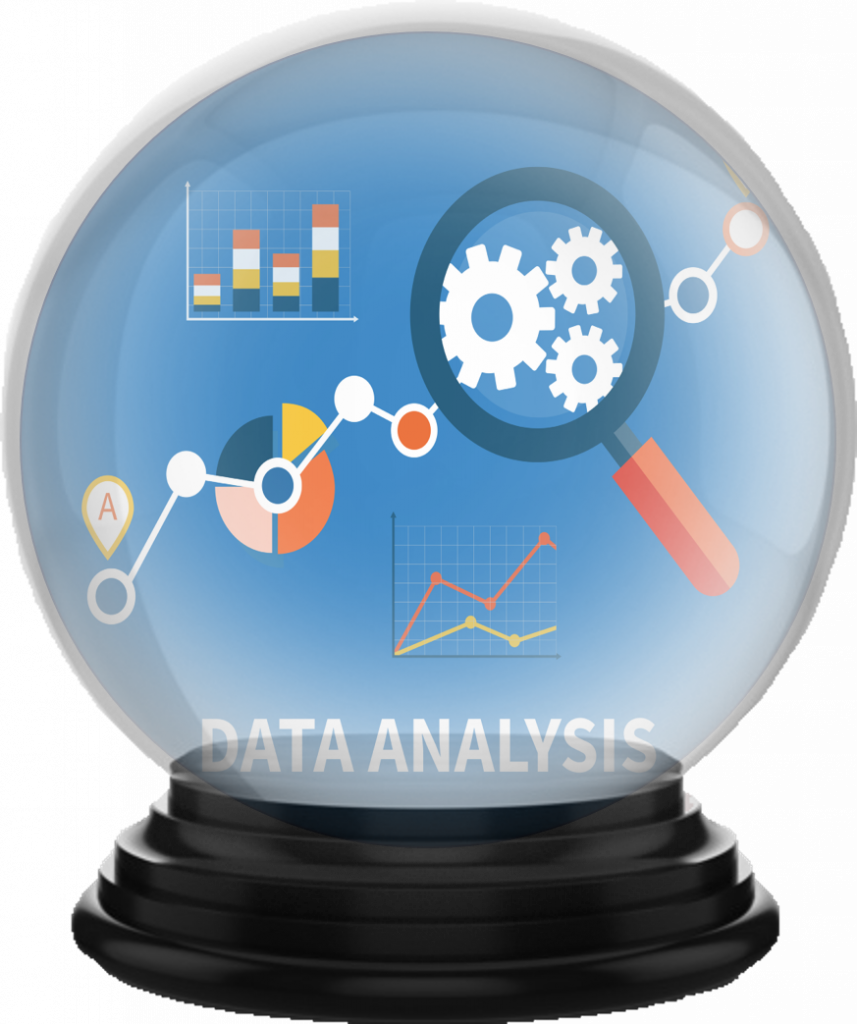When people write or talk about big data, they generally discuss both data and its analysis. The late productivity guru W. Edwards Deming once stated, “In God we trust, all others must bring data.” Bringing data, however, is insufficient. Stored data is of no value until it’s analyzed. But sometimes even analyzed data can’t be trusted. The late Nobel Economic Laureate Ronald Harry Coase, once stated something like, “If you torture the data long enough, it will confess anything.” A more recent quip states, “Thank you for collecting the additional data we requested; unfortunately, it still does not give us the answer we want.” Nevertheless, analytics is essential in today’s business environment. Peter Sondergaard (@PeterSonderg), an executive advisor and former Gartner analyst, insists, “Information is the oil of the 21st century, and analytics is the combustion engine.”
Analytics trends
Trend 1. Data quality is becoming a focus. Sandra Durcevic, a content manager at datapine, reports, “[The] Business Application Research Center conducted a survey and found that data quality management is becoming a key priority in the [business intelligence] industry. The context and the quality of data, alongside the collection of massive volumes of information, are becoming the focus for ensuring a certain quality in data analysis and decision-making processes.”[1]
Trend 2. Artificial intelligence is democratizing analytics. Andrew Brust (@andrewbrust), founder of Blue Badge Insights, writes, “AI and machine learning will become a sub-specialty within the broader data analytics landscape, rather than remaining quite so segregated from it.”[2] Ventana Research analysts predict, “By 2021, 33% of organizations will expect natural language query and natural language generation to be standard capabilities in business intelligence systems.”[3] Durcevic reports, “Gartner predicts that augmented analytics will be the number one of the analytics trends of 2020, and … it will impact businesses of all sizes. Contextual awareness and augmenting human intelligence with the help of machine learning will disrupt analytics to the point that everyone in a company will create complex mathematical models with the help of software.”
Trend 3. Privacy is becoming the elephant in the room. Consumers are starting to pay closer attention to how their personal data is collected, stored, and analyzed. The European Union’s General Data Protection Regulation (GDPR) and the California Consumer Privacy Act (CCPA) have set the stage for a potential battle over data and its analysis. Brust notes, “We can’t do all these great things with data if we don’t pay attention to data privacy, protection and governance. It’s all coming to a head.”
Analytics predictions
Prediction 1. In-memory processing will increase use of near-real-time analytics. Mary E. Shacklett (@MaryShacklett), CEO of Transworld Data, notes, “In-memory costs are decreasing, and this will drive more analytics to real-time environments. The demand for real-time or near real-time analytics will require fast CPUs and in-memory processing.”[4]
Prediction 2. Predictive and prescriptive analytics tools will become a standard in business intelligence. Shacklett predicts, “In 2020, there will be a shift toward more predictive analytics to assess future economic conditions, risk areas, climate trends, infrastructure maintenance, and investment needs.” Ventana Research predicts, “By 2021, 66% of analytics processes will no longer simply discover what happened and why; they will also prescribe what should be done.” Kenneth Maxon explains, “A subset of Big Data Analytics, Predictive Analytics attempts to forecast future events or behavior through historical data. It works through data mining, modeling, and machine learning techniques to predict what will happen next. … Prescriptive analytics offers advice to companies about what they should do in order to achieve a desired result.”[5]
Prediction 3. Cognitive technologies will become a mainstay of advanced analytics efforts. Shacklett predicts, “Corporate IT and data science departments will begin to integrate the various pieces of analytics into an organized whole. There is the baseline of rudimentary analytics, and then there is the possibility of augmenting these analytics with machine-generated data queries through artificial intelligence (AI) and machine learning (ML). Both AI and ML ‘learn’ from data analytics repositories by observing repetitive patterns of data, processing, and outcomes, and then posing derivative queries from what is learned. AI and ML will augment — not replace — human creativity in terms of framing unique analytics queries. Because AI/ML can rapidly perceive repetitive patterns, they may be able to deliver faster times to market for certain business insights.”
Prediction 4. Analytics providing actionable insights will be a significant corporate asset. Morris reports a Gartner study predicts, “By 2022, 90% of corporate strategies will explicitly mention information as a critical enterprise asset and analytics as an essential competency.” The same study predicts, “By 2022, more than half of major new business systems will incorporate continuous intelligence that uses real-time context data to improve decisions.”
Prediction 5. The Internet of Things (IoT) will embrace advanced analytics. Shacklett predicts, “In 2020, IoT analytics will move toward a more holistic approach. Next year will be a ‘step off’ point toward unifying the streams of IoT analytics, and input companies are getting into an integrated IoT grid that more closely reflects actual enterprise operations.”
Concluding thoughts
Brent Dykes (@analyticshero), Sr. Director of Data Strategy at Domo, writes, “Sure you need to spend some money on analytics (technology and people), but it’s going to be less than the price you’ll pay if you don’t know how your business is performing. … Without analytics, your company is vulnerable.”[6] He quotes author Geoffrey Moore who wrote, “Without big data analytics, companies are blind and deaf, wandering out onto the Web like deer on a freeway.” Daniel Newman (@danielnewmanUV), a principal analyst at Futurum Research and CEO of Broadsuite Media Group, takes it even further. He predicts, “Companies that still aren’t investing heavily in analytics by 2020 probably won’t be in business in 2021.”[7] His prediction might be a bit hyperbolic, but it echoes the sentiment of many analysts who believe advanced analytics are required for companies to maintain a competitive advantage. Asti Infotech analysts assert, “The demand for Big Data Analytics is growing tremendously. [Advanced analytics help] organizations to make informed and accurate business decisions with ease.”[8]
Footnotes
[1] Sandra Durcevic, “10 top business intelligence and analytics trends for 2020,” Information Management, 10 December 2019.
[2] Andrew Brust, “Data and analytics in 2020: Industry predictions,” ZDNet, 26 December 2019.
[3] Tricia Morris, “20 Data and Analytics Predictions through 2025,” MicroStrategy, 16 April 2019.
[4] Mary E. Shacklett, “Big data predictions: 8 analytics trends in 2020,” TechRepublic, 30 December 2019.
[5] Kenneth Maxon, “Top 10 Big Data Technologies You Must Know In 2020,” Robots.net, 25 December 2019.
[6] Brent Dykes, “31 Essential Quotes on Analytics and Data,” Analytics Hero, 25 October 2012.
[7] Daniel Newman, “Top 10 Digital Transformation Trends For 2020,” Forbes, 14 July 2019.
[8] Asti Infotech, “What are the top 10 digital transformation trends for 2020?” Quora, 13 November 2019.




